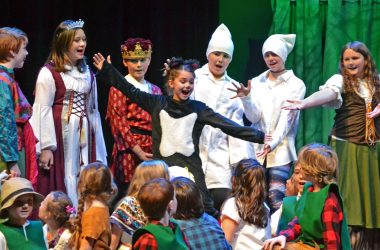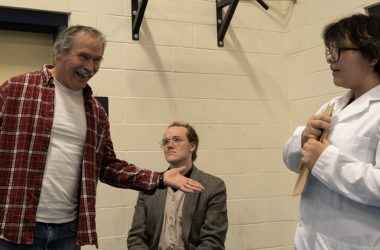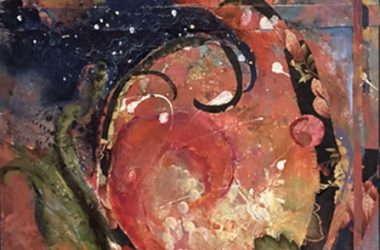by David Rodgers
GREENSBORO – The concert of the Caspian Monday Music series, entitled “The Serenity and Virtuosity of Haydn and Mozart”, which took place on August 21 at the Highland Center for the Arts, featured compositions by Albinoni, Haydn and Mozart with soloists in the two concertos accompanied by an orchestra of 21 musicians, about the size of a private court ensemble in the 18th century such as Haydn conducted at Esterhazy when he was Kapelmeister there.
The program began with the “Concerto for Oboe and Strings in D minor, Op.9, No.2” by the Italian composer Tomaso Albinoni (1671-1751). Igor Leschishin played the oboe with his usual elegant grace, where the music seems to flow along unhesitantly, with superb beauty of tone, always a pleasure to hear. The first movement, Allegro e non presto, had a medium tempo in a very business-like scoring, with breaks from the oboe in orchestral interludes.
The Adagio of the second section had a sustained note on the oboe repeated twice, then orchestration that gave space to the soloist to shine.
The last part, another Allegro, but faster than the first, had interesting textures between the oboe and the background continuo from the other players.
Solomiya Ivankhiv conducted with finesse. “The Concerto for Violin and Orchestra, No.3 in G Major, K. 216” by Wolfgang Amadeus Mozart (1756-1791), was written in 1775. It begins with an Allegro, having a great melody right from the first few bars, then transitioned to a second theme in a more skipping rhythm.
Mozart continued to go off on other tangents, full of surprises as he developed the melodies without repetitions, so fertile was his musical imagination. A solo violin cadenza created the opportunity for improvisations with a lot of virtuosic freedom here, with varied rhythms and all kinds of delightful effects. Solomiya Ivakhiv was the violinist in this piece, masterful in the way she was totally at one with her instrument.
The middle movement, a slower Adagio, had a dignified pace with a beautiful tune and another cadenza, all of which Ivakhiv played with heartfelt feeling, bringing out subtleties in her sensitive phrasing through the touch of her bow upon the strings, and fingering.
The Rondeau Allegro of the final section was a sheer joy in its initial, playful melody and its subsequent themes, morphing at one point into a peasant dance in Mozart’s brilliant scoring for the violin and orchestra. Again, Ivakhiv really made the music come alive, conducting at the same time she was playing, truly evoking the soul of Mozart, for which she received a standing ovation.
After the intermission, the orchestra, conducted by the concertmaster and first violinist Jaroslaw Lis, performed the “Symphony No.55 in E Flat Major, H.I:55,” by Franz Joseph Haydn (1732-1809), which was written in 1774 and is subtitled “The Schoolmaster.”
One interesting aspect of the Mozart-Haydn relationship was that although Haydn obviously had a large influence on the younger Mozart, Mozart in turn influenced Haydn’s later works.
The four movements of the symphony proceeded in a very regular order, starting with an Allegro molto, with the first violin leading off each shift in the ABA sonata sequence of the two melodies.
The following Adagio, ma semplicemente, had a light lilt to it that really sang with a French horn passage, for during this period Haydn began to feature woodwinds more prominently in his orchestration rather than just relegating them to background support, with the strings always dominant.
The Minuet Trio had a stately dance rhythm with a strong beat, almost like a march, then a second tune emerged creating a conversation among the violin, viola and cello.
The Finale Presto took off in a faster tempo with a lively melody, then into the French horns, oboes and flutes all prominent before a return to the previous instrumentation, with vigorous playing by the whole orchestra in a highly integrated ensemble effect.
Again, the audience responded with a second standing ovation for the evening.
Members of the orchestra were Jaroslaw Lis (concert master), Veronika Schrieben,
Claudio Schaer, Jonathan David Livioco and Vincent Kaverud on violins 1, Sarah Washburn (principal), Krystian Pawlowski, Katalin Viszmeg and Chris Sunun on violins 2, Robert Smith, Melinda Daetsch and Collin Loussen on violas, Rebecca Paterson (principal), Ignacy Grzelazka and Hannah Moss on cellos, Scott Chaurette on double bass, Robin Cameron Phillips and Laurel Mauer on flutes, Igor Lesdhishin and Andrea Breitenbach on oboes, and Barbara Hill (principal) and John Michael Flazetta on French horns.
Great thanks to Theodate Coates and the Rodney Foundation for having sponsored Caspian Monday Music for so many years! For more information, go online to caspianmondaymusic.org/






